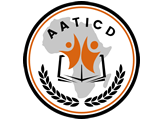Why Attend
The Asset Management course provides a comprehensive overview of the principles and practices of Asset Management (AM). The content is aligned to PAS 55, ISO 55000 and competency framework.
This course provides a well-rounded competency development and assurance stage for those who already have either practical experience or specialist knowledge in AM, and are now seeking a more comprehensive understanding of AM. Participants will develop a business-centered appreciation of Asset Management and will be better able to influence decisions that have AM implications.
Course Methodology
This is a highly interactive course that will include group discussions, case studies, videos, and group presentations.
Course Objectives
By the end of the course, participants will be able to:
- Contribute to the generation and implementation of AM policy, strategy, objectives, and plans within their organizations
- Participate in asset-related risk identification, analysis, management processes, and contingency planning
- Understand the asset lifecycle and the role of appropriate tools to optimize the performance, risk, and cost of assets
- Identify the information and performance measures needed for effective asset management, and evaluate the impact of asset information systems
- Understand the financial implications of asset and asset management decisions for their organization, and translate technical issues into business implications
Target Audience
Participants from organizations where the reliability, performance and attendant risks of fixed assets have a significant impact on business performance, will benefit most from this course. This course is suitable for engineering and technical managers, project managers and project engineers, operations managers, maintenance managers, Facilities Managers, EHS and quality managers, and procurement and supply chain managers.
Target Competencies
- Asset management
- Risk identification
- Contingency planning
- Asset life cycle costing
- Maintenance planning
Location:
South AfricaTraining Dates:
Each course starts every Monday of each week. Please book your training on a date that is a Monday.Course Duration:
Unit Standard:
NQF Level:
Number of Credits:
Course Fees
Note: Please fill in the online application form on the left or bottom if this page to receive a quotation with detailed pricing from AATICD.How to Apply:
To Apply Simply Fill in the Online Enquiries / Applications form on the Right Sidebar or Bottom of this website https://www.aaticd.co.zaNB:
When filling the online application form; please take note of your desired Training Month, Duration in Weeks and Training Session. This will give us the exact dates you will be attending your classes.Also note that Tuition Fees must be paid upfront on or before training start date. This is to ensure that all resources are made availabe for you before you start. You will not be allowed into training if fees are not paid and verified.
Also note that Tuition Fees Cancellations must be made 14 business working days before the starting date of training. This will allow us to do a 50% refund of the total amount paid. If cancellations are made thereafter note that no refund will be made to delegates.
Tuition Fees include teas and lunch as well as either a laptop or tablet which a delegate will take home free of charge.
Tuition Fee DOES NOT include Accommodation, Dinners and other Extra Curricular Activities or Incidentals. Delegates are expected to fund this on their own. AATICD will not be held accountable for any incidents to delegates.
In-House Trainings are also available for 3 or more delegates for any duration. Please consult with our Administration for such In-House training bookings.
Course Outline
- Introduction and overview of Asset Management (AM)
- Introduction to AM
- International Standards – ISO 55001
- Overview of good practice
- Organizational context and stakeholder needs
- Converting business plans to asset plans
- The strategic AM plan
- AM policy
- Needs and capabilities of the assets
- The Asset Lifecycle
- Introducing the Asset Lifecycle
- Design and acquisition
- Commissioning and handover
- A Strategic approach to operations and maintenance
- Understanding and managing failures – Introduction to tools and techniques
- Root Cause Analysis (RCA)
- Failure Mode and Effect Analysis
- Managing ‘random’ failure
- Spares management
- Decommissioning, disposal, and renewal
- Asset life cycle strategies – Alignment and optimization
- Developing and optimizing AM plans
- Constraints and shutdown optimization
- Planning, risk management, and decision making
- Delivering plans
- Capital
- Operations and maintenance
- Managing resources and change
- Outsourcing and supply chain management
- Risk management
- Asset criticality
- Contingency planning
- Value and risk-informed decision making
- Asset Management decision making – Principles and approach
- Techniques for working uncertain or sparse data
- Life Cycle Costing (LCC)
- Introduction
- Evaluation of options
- Delivering plans
- Asset Management enablers
- Asset information – Overview
- Asset data – Fundamentals
- Dynamic data – Condition and performance
- Collecting and using tacit information
- Information systems – Introduction and overview
- Organizational structures for AM
- Assessing and developing AM competencies
- Leadership in AM
- Evaluation and continual improvement
- Successful changing organizations
- Communication and culture change
- Performance evaluation
- Developing and using performance indicators
- Continual improvement
- Governance and assurance for asset management – Auditing and management review
- Maturity beyond ISO55000




